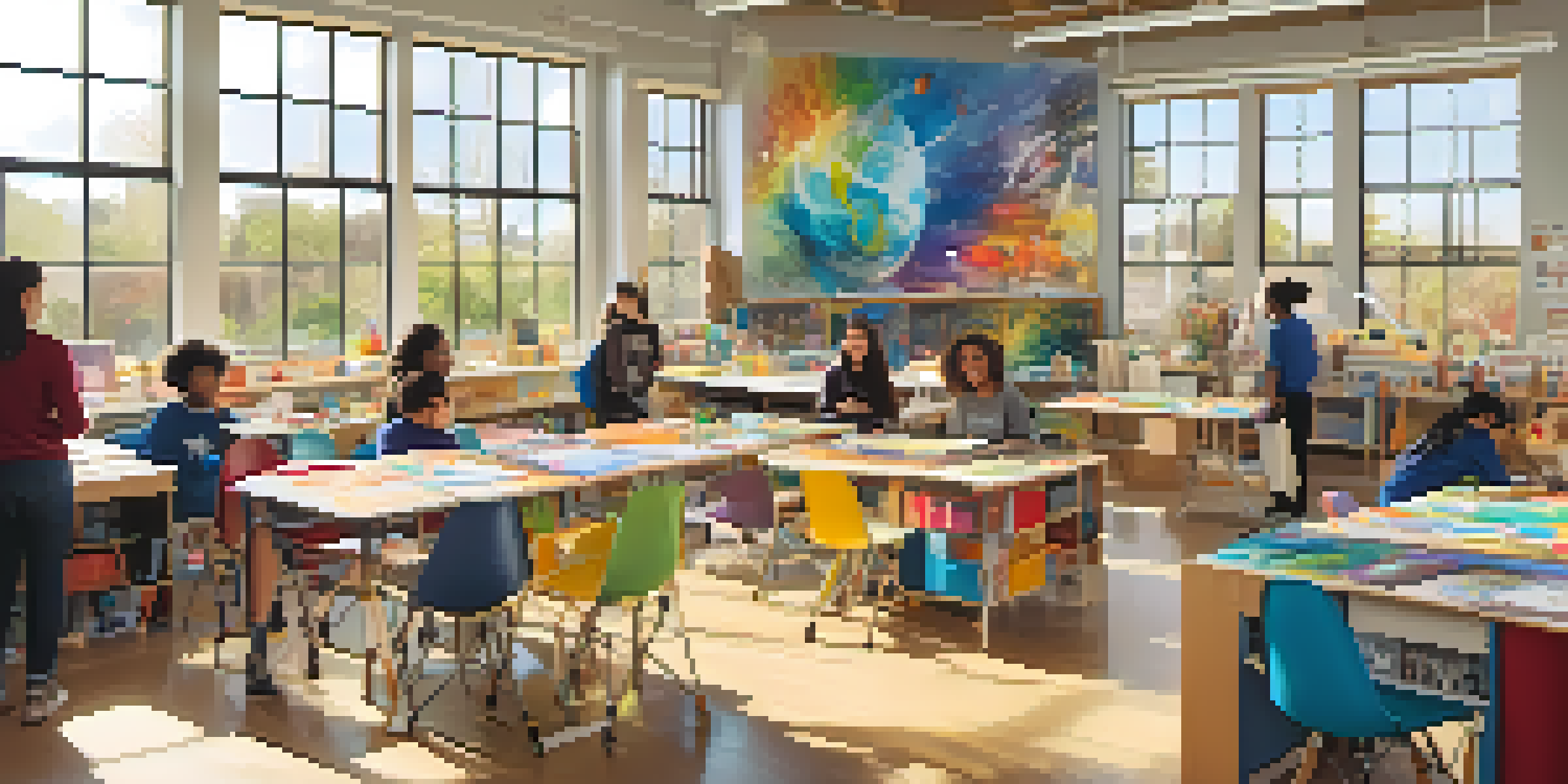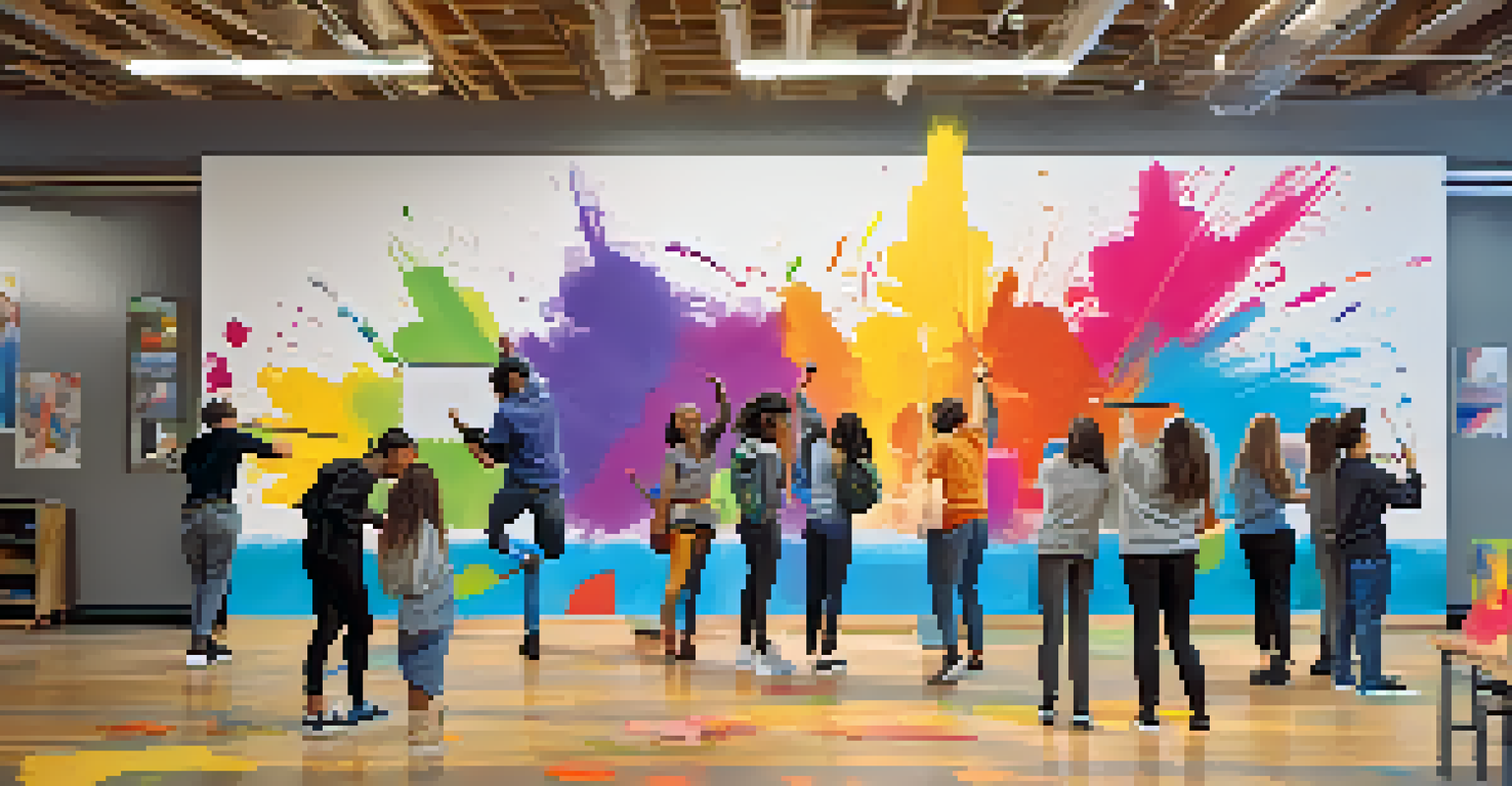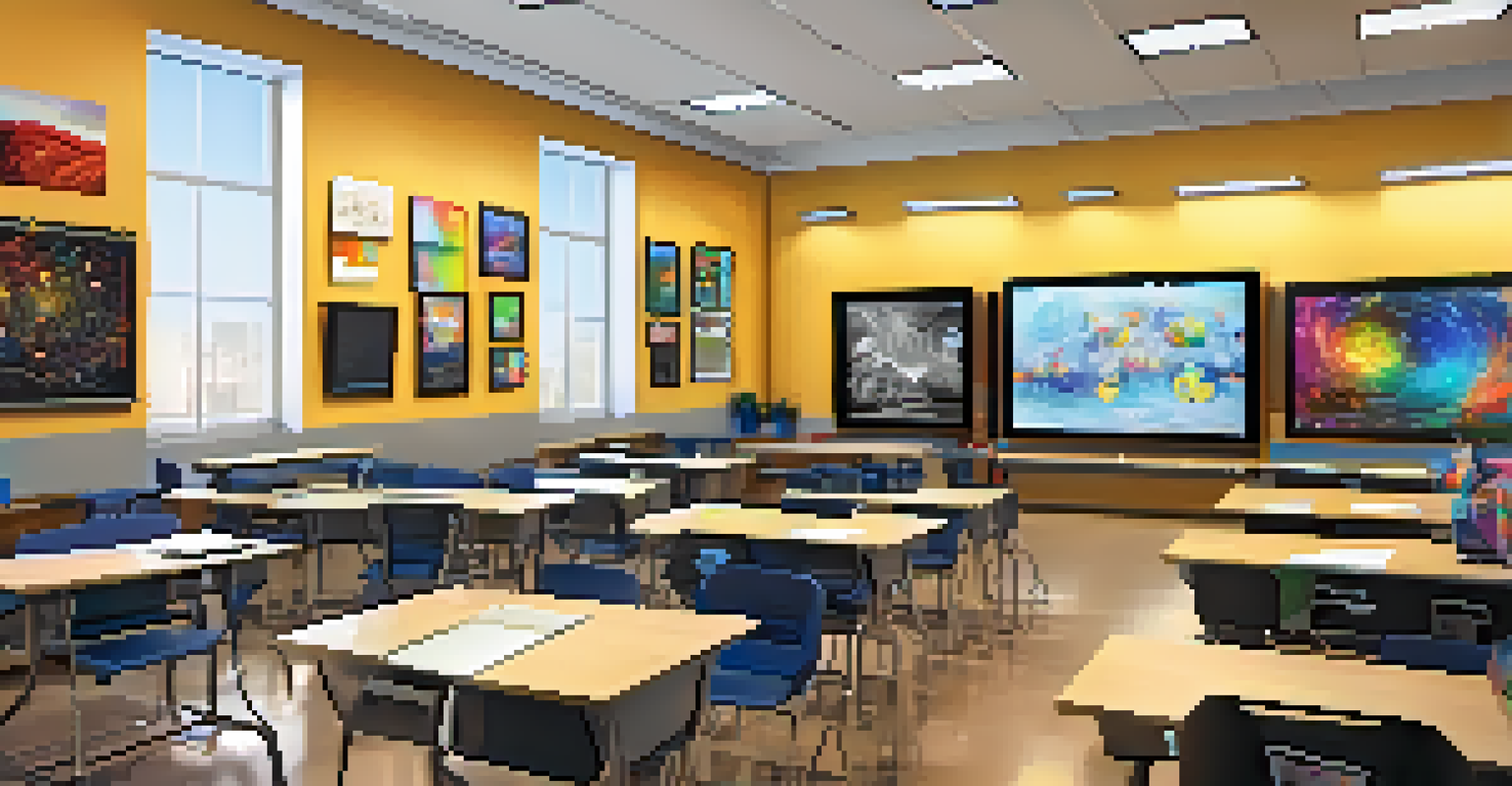Integrating Art into Learning Environment Design

Understanding the Role of Art in Education
Art plays a crucial role in education by fostering creativity and critical thinking. When students engage with art, they learn to express themselves and explore different perspectives. This engagement not only enhances their academic experience but also helps in developing emotional intelligence.
Art is the most beautiful of all lies; it is a lie that helps us to see the truth.
Moreover, art can bridge the gap between different subjects, making connections that encourage interdisciplinary learning. For instance, a project that combines history and art allows students to delve deeper into cultural contexts while enhancing their artistic skills. This interconnectedness enriches the overall learning journey.
Incorporating art into education isn't just about adding a subject; it's about creating a holistic learning environment. By understanding its role, educators can better appreciate how art contributes to a well-rounded educational experience.
Creating Inspiring Learning Spaces
The physical environment of a learning space significantly influences student engagement and motivation. Integrating art into classroom design can transform sterile rooms into vibrant, inviting spaces. Colorful murals, student artwork, or interactive installations can spark curiosity and creativity.

For example, a classroom adorned with student-created art not only personalizes the space but also fosters a sense of ownership among learners. This sense of belonging can lead to increased participation and enthusiasm in their studies. Art installations can also serve as conversation starters or prompts for creative thinking.
Art Enhances Learning Experience
Integrating art into education fosters creativity, critical thinking, and emotional intelligence among students.
When designing learning environments, it's vital to consider how art can enhance both aesthetics and functionality. A well-thought-out integration of art can create an atmosphere that encourages exploration and innovation.
Benefits of Art Integration in Learning
Integrating art into learning environments has numerous benefits for students and educators alike. Research shows that students exposed to artistic activities tend to perform better academically. This improvement is often attributed to enhanced problem-solving skills and increased engagement.
Every artist was first an amateur.
Furthermore, art provides a unique avenue for self-expression, which can be especially beneficial for students who struggle with traditional forms of communication. It allows them to convey their thoughts and emotions in a visual format, reducing barriers to participation.
In essence, the integration of art not only enhances academic performance but also promotes emotional well-being. This dual benefit underscores the importance of incorporating artistic elements into educational strategies.
Encouraging Collaboration Through Art
Art can serve as a powerful tool for fostering collaboration among students. Group projects that involve artistic creation encourage teamwork and communication skills. As students work together, they learn to share ideas, negotiate roles, and appreciate diverse perspectives.
For instance, a collaborative mural project can unite students from different backgrounds, fostering a sense of community. This shared experience not only enhances their artistic skills but also builds lasting relationships among peers.
Art Fosters Collaboration
Collaborative art projects promote teamwork and communication skills, building a sense of community among students.
Through collaborative art projects, students can develop essential social skills while creating something meaningful together. This sense of unity can enhance their overall learning experience and create a positive classroom culture.
Art as a Medium for Diverse Learning Styles
Every student has a unique learning style, and art can cater to these diverse preferences effectively. Visual learners may thrive in environments rich with artistic expression, while kinesthetic learners can engage with hands-on art projects. This adaptability makes art an essential component of inclusive education.
For example, incorporating art into lessons allows students to process information in ways that resonate with them. A lesson on fractions could involve creating art that represents different fractional parts, making the concept more tangible.
By embracing various learning styles through art, educators can create a more inclusive environment that meets the needs of all students. This not only boosts confidence but also leads to better retention of information.
Integrating Technology and Art in Learning
The integration of technology into art education is a game-changer for modern learning environments. Digital tools allow students to explore artistic expression in innovative ways, from graphic design to digital photography. This fusion provides new avenues for creativity and engagement.
For instance, students can use apps to create digital portfolios showcasing their artwork, enhancing their technological skills alongside their artistic abilities. This not only prepares them for future careers but also keeps them engaged in the learning process.
Art Supports Diverse Learning Styles
Art caters to various learning styles, allowing students to engage and express themselves in ways that resonate with them.
By blending art and technology, educators can create dynamic, interactive lessons that resonate with today’s digital natives. This approach not only enhances artistic skills but also fosters critical thinking and adaptability.
The Future of Art in Learning Environments
As we look to the future, the integration of art into learning environments is likely to evolve further. With the rise of creative education models, we can expect to see more innovative approaches that blend art with other disciplines. This evolution will shape the way students learn and express themselves.
Moreover, the increasing recognition of the importance of social-emotional learning highlights the need for artistic expression in educational settings. Schools that prioritize art will be better equipped to nurture well-rounded individuals who can thrive in diverse environments.

In conclusion, the future of art in education is bright, promising enriched learning experiences that prepare students for the complexities of the modern world. By continuing to integrate art into learning environments, we can cultivate creativity, collaboration, and critical thinking in the next generation.